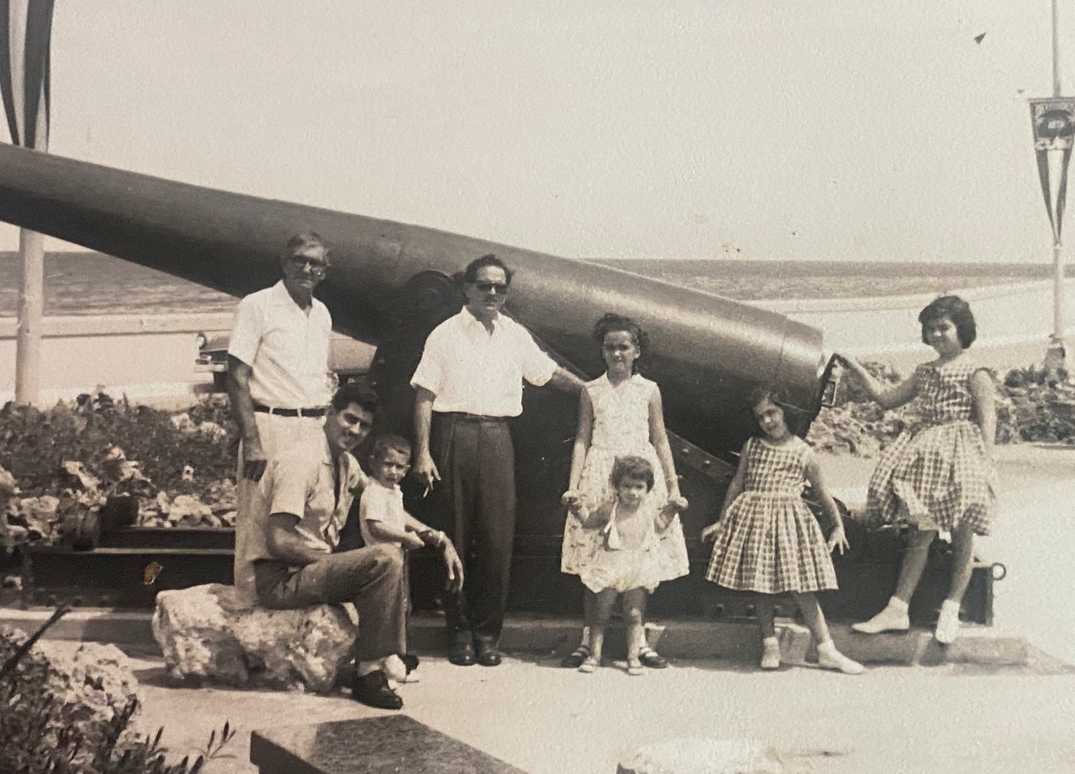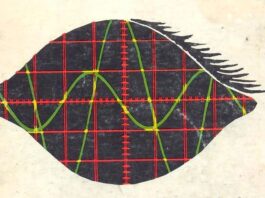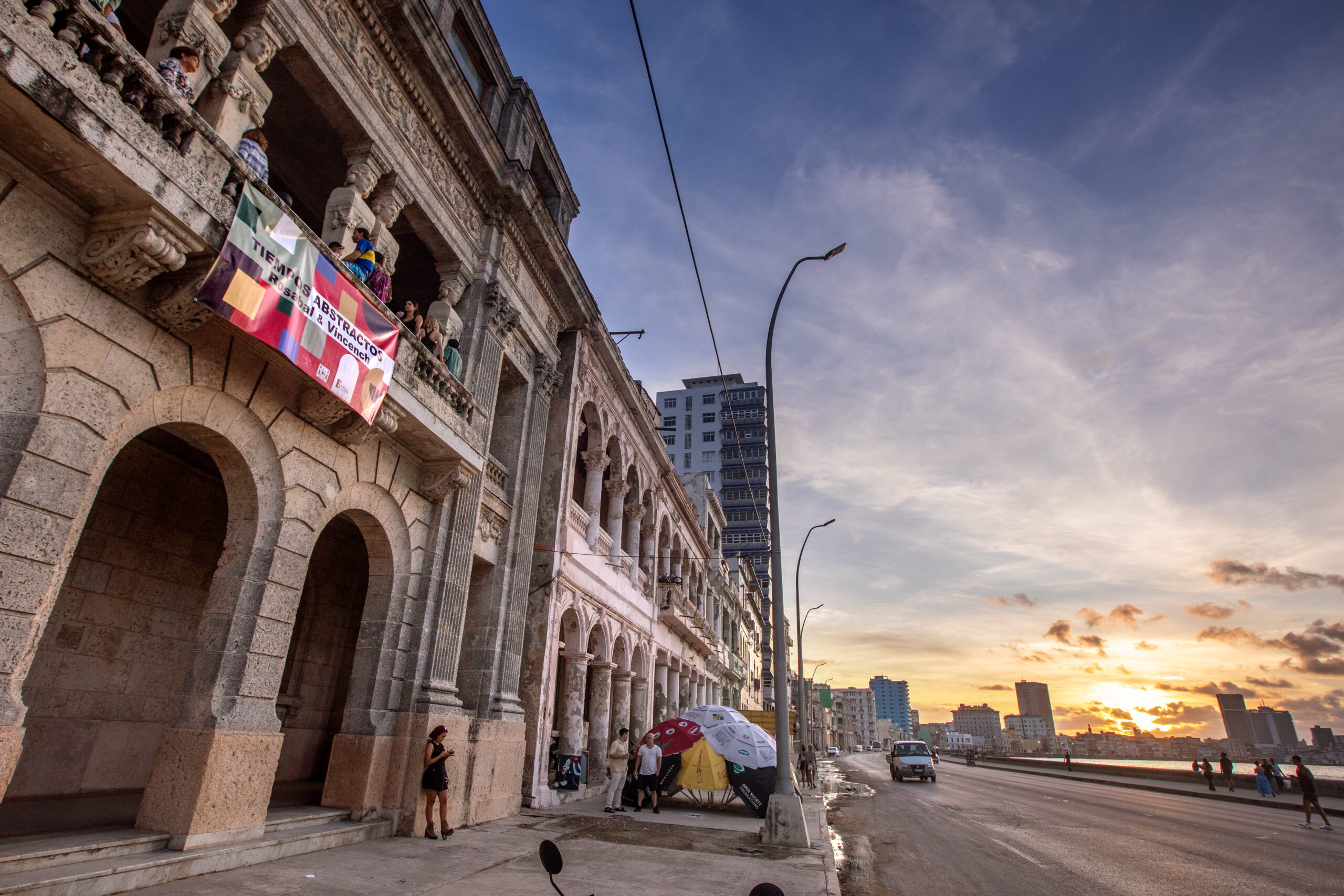This year, on August 23, the independent space Maden Morgan Estudio Galería, in Havana, hosted the official presentation of the multiplatform project Archivos del Monte, an initiative for the collection, safeguarding, research and socialization of Cuban photographic images of domestic record of all times, mostly discarded, decontextualized and found, which has been conceived and is managed by Cuban artist and film producer Hanzer Gonzalez Garriga together with researcher Jorge Luis Roig Garcia.
With the support of the Fototeca de Cuba and funds from the Norwegian Embassy for the support of culture on the Island, the walls of the studio gallery hosted a sample of the exponentially growing collection that Archivos del Monte treasures, already previously disseminated on its specialized Instagram profile, its official website and in video creations by González Garriga such as Mi abuelo ganó dos años consecutivos el certificado de vanguardia en las tareas de vigilancia (2023) and Control de cambios (2024).
Orphanhood and amnesia
Although, according to what the artist and archivist told me, the core of his initiative was the photographic archives of his family, to which were added those of Roig Garcia, her husband, the bulk of the patrimony is made up of orphaned Cuban photographs. The identities of the protagonists portrayed, often the events themselves, exterior and domestic spaces, and even the precise dates, have been diluted in an irreversible oblivion. They are epitaphs, cardboard tombstones erected to the second deaths that occur when the last preserved memory of someone or something disappears.
The images saved, organized and processed by González Garriga lost their pristine objectives of recording affective worlds, leaving traces of the impressions and curiosity of people who used photographic technology throughout the twentieth century to preserve memories of their family environments, of their intimate and professional experiences.
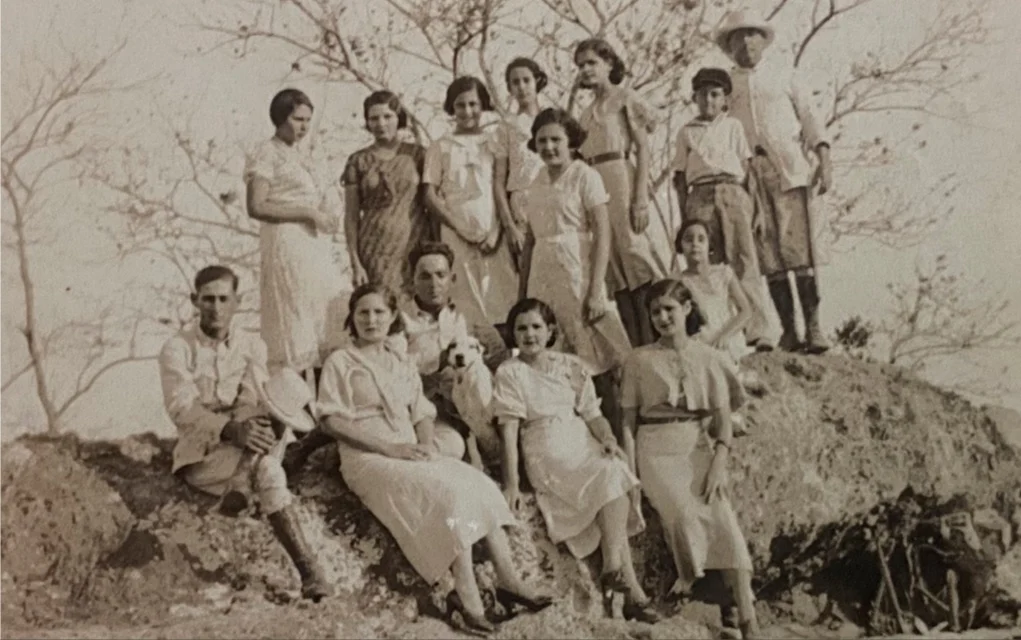
Many times, in their shipwrecks in garbage cans and dumps that plague these days the rickety Cuban streets, they are accompanied by other documents, other pieces of lost puzzles. Forms, files and work cards, slides, cassettes in VHS format, diplomas that recognize the futile effort of many new men and women to build the “revolutionary project” at the cost of their vital breaths, complement the worn, broken photos, many run over by vehicles whose tracks singularize the surfaces with curious three-dimensional signatures.
Photographic images are reduced to entelechies once they are discarded. They are induced to amnesia. They are historical castaways, but they still contain in themselves numerous proofs that can help to unveil part of the mystery of their origins and identities, although many of the collections will remain in perpetual anonymity, coated by the mystery that lies in the essence of beauty, of all art and all science, to paraphrase Einstein, and become such fascinating sources of questions that they end up not needing (or deserving) concrete answers.
They are broken genealogies that end up being the genesis of probable mythologies, or detonators of speculations and fantasies about individuals and families drowned in nothingness, condemned to nullity by those who discarded the possible last testimonies of their existence.
Resurrection
The metaobjective to which both the topical associations published by the archivist on his Instagram profile -often motivated by days dedicated to social groups, phenomena, architectural elements, economic processes or ephemeris on a global or national scale- and the aforementioned videocreative works, is the “enhancement” of this entire backdrop.
For the Archives of the Mount are a living, dynamic heritage. Gonzalez Garriga refuses to replace merely the garbage deposit with a sort of archive-grave, a passive deposit from which the photos will not come out for a long time, or never, relegated to a new oblivion, although preserved from the inclemency of the landfills, but equally anonymous, lost. Gonzalez Garriga’s gaze goes in the opposite direction of passive archivism, of lethargic collecting, of mummification. All memories deserve to be remembered.
The actions deployed so far by the archivist, and others he plans in the short term -such as the publication of a book (photobook), possible upcoming public exhibitions, the enlargement of the website’s virtual gallery from criteria somewhat different from the Instagram profile, new video creations by him or by other artists who can freely access the physical and digital archives- underpin a true resurrection of these rescued funds. It puts him in the same direction of the group of the Wild Archivists -Lucía Malandro, Daniel Saucedo, Josué García and Fabio Quintero-, dedicated on their own to resurrect the stifled history of the Cuban audiovisual, victim to a great extent of the indolence of a film institution unconcerned with adding chapters to its conventional, rigid and immutable canon.
The photos found by Gonzalez Garriga and the team of collaborators who extend their reach and speed up the compilation process -a group of poor people, of those wrongly qualified by the Island’s power as “vulnerable”, who “dive” in the garbage dumps and acquire a good part of the archive’s collection – are not only victims of institutional neglect – as is the case of a batch of pre-1959 photographs of high society discarded by the archivists of Bohemia magazine, now in the Monte’s collection – but of a generalized apathy, desperate, it could be said, that weighs on the nation. The policy sustained by those in power to manipulate and suppress historical memory, in favor of the prevalence of their ideological dogma, seems to have seeped through all the cracks of society, encouraging the indiscriminate discarding of one’s own and other people’s memories.
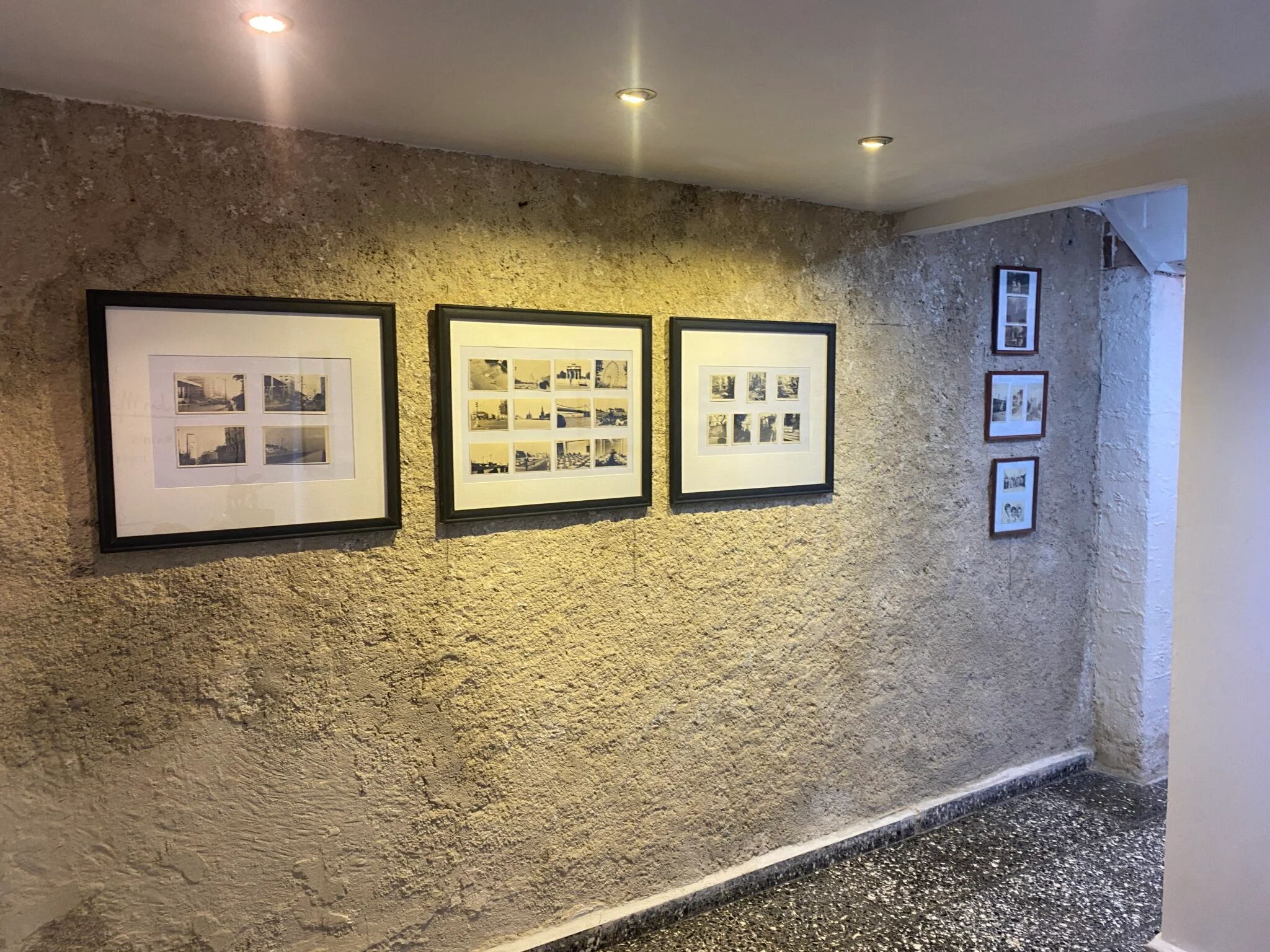
Leaks and stranded memories
Gonzalez Garriga also tells me that another of his lines of work is the custody and safeguarding of family albums that people who cannot take them with them on their definitive migration from Cuba are beginning to temporarily bequeath them to him. He admits them into his collections with the promise to take care of them, but at the same time to use them in his socializing strategies of “enhancement”, of microhistorical inquiry.
Cubans leave the island without looking back. They are an exile that expands the nation, reinterprets it more and more to the detriment of the geographical space as a patriotic boundary, but often the escape requires lightness of baggage, or the absolute absence of it. Memories eternalized in photos are a physical and often sentimental burden, the abandonment of which helps to propel the definitive tearing apart of migrants.
The physical island ends up kidnapping the memories recorded in albums, retaining them as substitute ghosts of the living bodies that leave; as happens with the eternal and redundant holographies of the novel The Invention of Morel, by Adolfo Bioy Casares, which deceive the emptiness hovering over the abandoned territory.
Cuba keeps for itself the material echoes of a citizenry on the run, which has not ceased to return testimonies of its nostalgia and its adventures in exile. Thus, Archivos del Monte also includes a remarkable collection of photos of the diaspora, sent mainly in the last decades of the 20th century by Cuban emigrants to their families or friends who remained in Cuba.
As Gonzalez Garriga points out during the interview, these documents abound in testimonies of nostalgia, “compensated” with the manifestations of economic prosperity, of the happiness achieved across the seas, in spite of the heartbreak here. The recipients of these photos have also abandoned them for a long time, adding them to the wreckage of the shipwreck that lies in the archives of the Monte.

Multitudes of such images lie in the dumpsters, equally amnesiac, stripped of their pristine meanings, but ready to be revalidated as important anthropological and sociological documents on the notions of happiness shared by many Cubans, on their models of success and prosperity. And about the cost of all this, translated into the perennial breaking of emotional ties under the shattering pressure of the status quo.
The archival generation
At the same time that he is developing a research project that in 2023 merited the “María Eugenia Haya” photographic research grant from the Fototeca de Cuba, Hanzer González Garriga is taking the Diploma in Preservation of Sound, Photographic and Audiovisual Heritage, sponsored by the Ministry of Culture of the Government of Mexico, through the Fonoteca Nacional and the Ibermemoria Sound, Photographic and Audiovisual Program, which will allow him to deepen his knowledge, among many other things, in taxonomic methods for mapping his archive.
He tells me that, of the more than 60 people enrolled in the diploma course, practically a third are over 45 years old and work in “official” institutions dedicated to the conservation and safeguarding of these heritages. But the other two thirds are lesser, and are not linked to any state or private entity. Their archives are the result of private management and the result of anxieties, obsessions and concerns that seem to characterize them as a generation.
The archival fever that today transverses audiovisual and visual creation on a global scale is a notorious sign of a time in which the extreme fragility of the recording of memories goes hand in hand with the technological sophistication that seeks to banish material supports in favor of an impalpable virtuality. Tactile and olfactory sensations have been practically eliminated from the sensorial experience of contemplating one’s own or others’ affective registers. Gonzalez Garriga points out to me at one point how difficult it is for him to preserve the photographs printed since the late 1980s and 1990s, as opposed to the impressive integrity of the materials from photos 80, 90 years older.
Memories and testimonies of contemporaneity remain in digital limbos, liable to be extinguished at any instant, taking with them countless layers of memory. While the traces of the past seem more and more consistent, real, solid. The concrete past contrasts with a fleeting, ephemeral and volatile present. Every past time does not necessarily have to be better, but it does show much more strength.
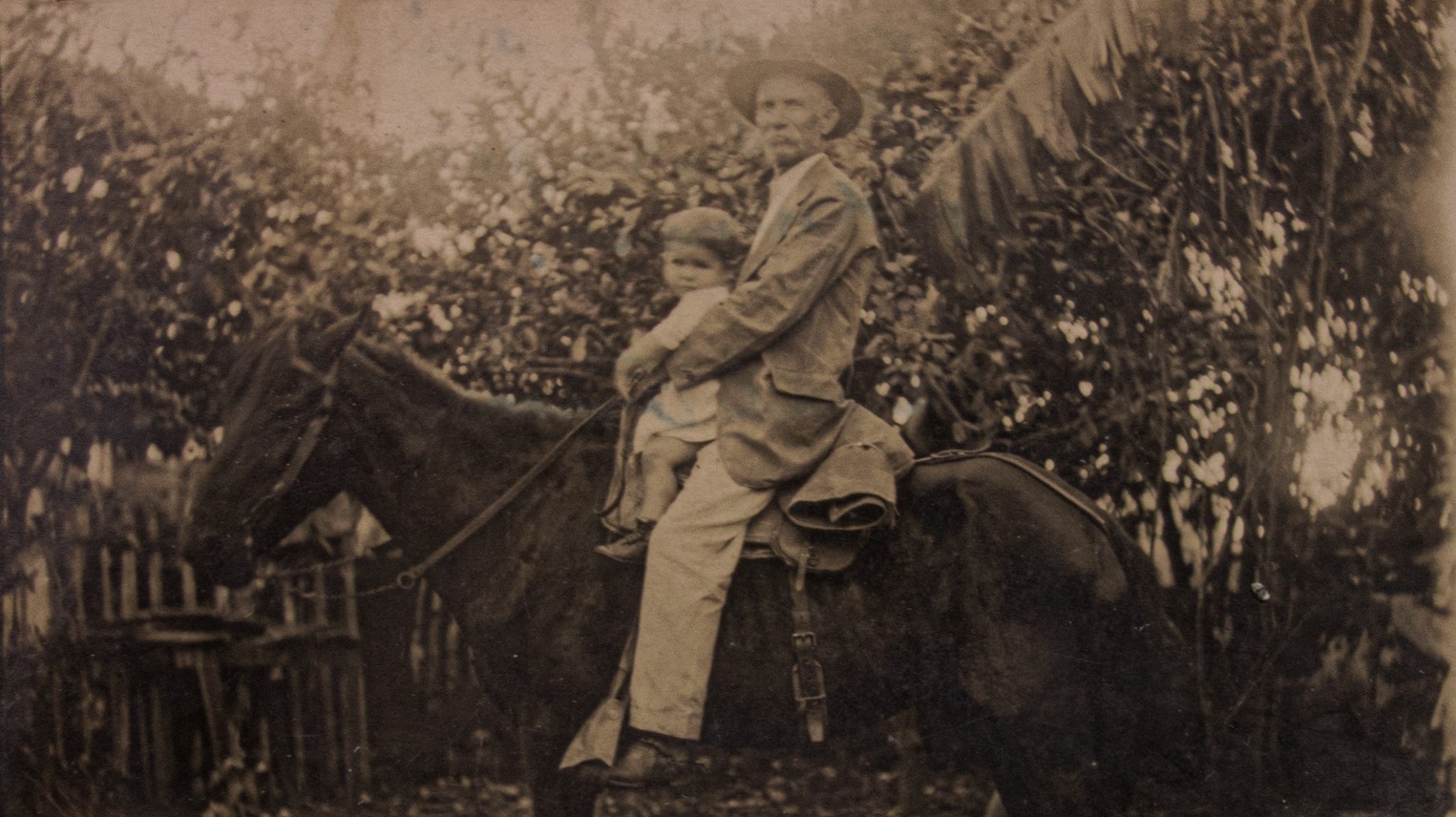
Gonzalez Garriga, 31, notes that his “is a generation that lived much more strongly the stage of change from analog to digital, in full growth,” and “we have a kind of nostalgic trauma to the passage of time. His generation mates are “the last ones who were born with the analog photo, with the album, with the recordings of birthdays in VHS format. The generation of my siblings, who were born after 2000, for example, is not interested in that. When there is an education, maybe yes, but really what there is an interest in the product of thirty seconds, fast, that summarizes all the things, and we pass and move on to the next one, the next one, the next one, the next one. Nobody stops to think. I think that right now we are facing adulthood in an environment that, both Cuban and universal, is a disaster”.
This lineage of wild, frantic archivists, which integrates the broadest and roughly identified as “millennial generation”, has witnessed like no other the dematerialization of memory, as well as the virulent fragmentation of knowledge to the dangerous suppression of patterns, logics and complex constructions of knowledge. In the face of the overwhelming present that invades past and future, turning them into a sempiternal now (any similarity with 1984 is not much of a coincidence), revalidating memory would practically imply the vindication of the human being as a thinking being, a producer of knowledge and lasting affections.
